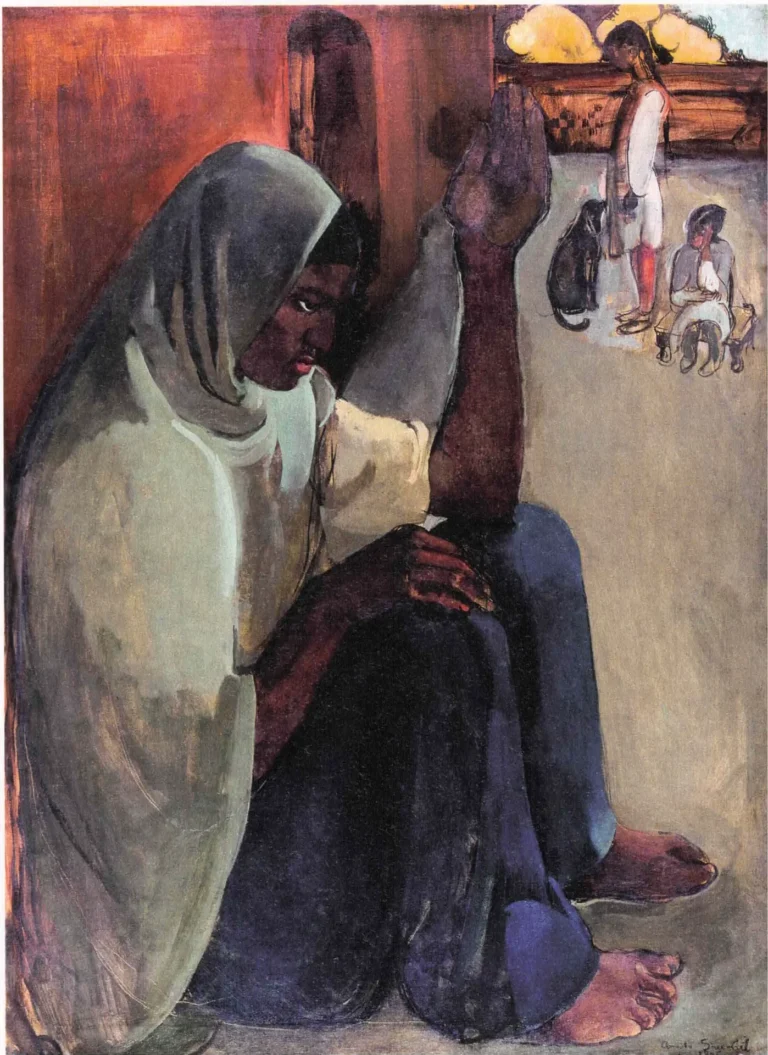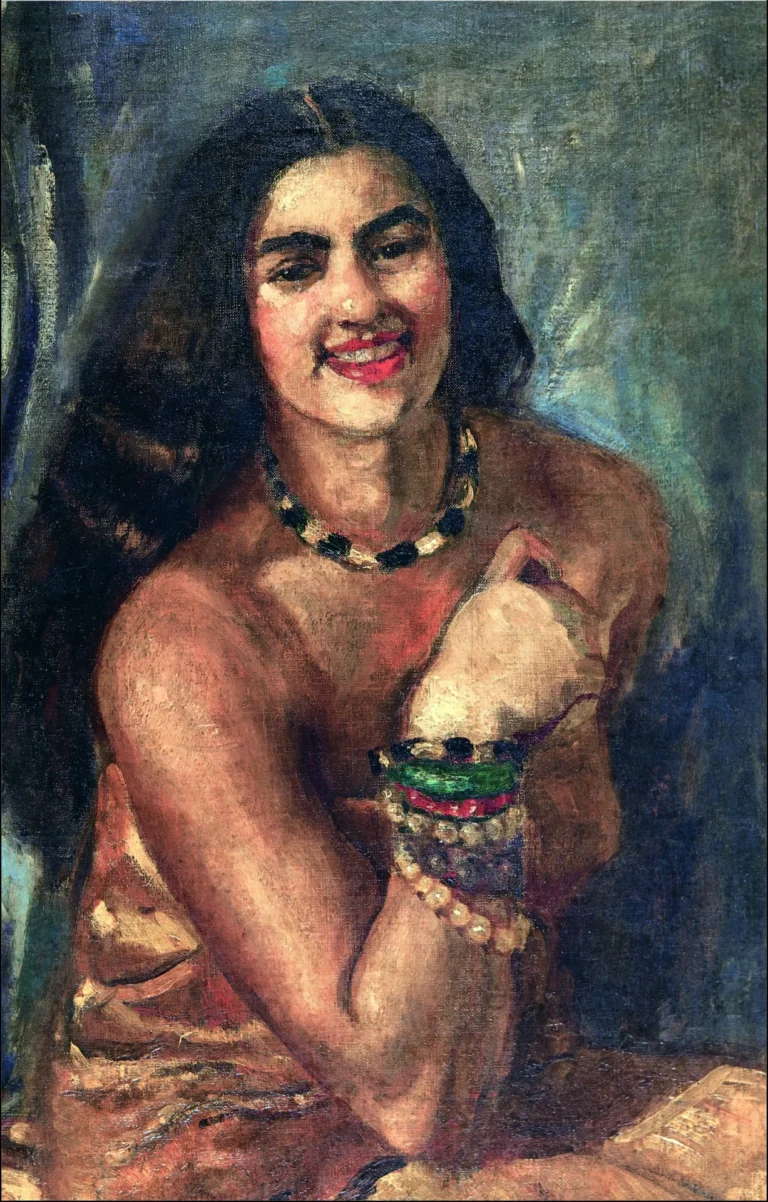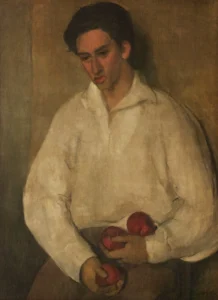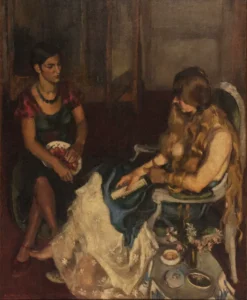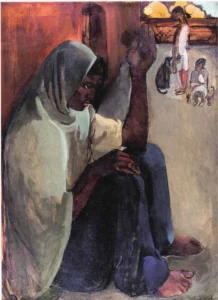Woman on Terrace (1935)
Painted in February 1935, Woman on Terrace captures a serene scene of a woman on a terrace in Amritsar, a setting reminiscent of the daily lives of Indian women. Amrita Sher-Gil’s style combines realism with modernism, unique for its vivid colors and the dignity shown in her subjects. This work exemplifies her artistic evolution during her return to India, showcasing her dedication to portraying the intricacies of Indian existence. The painting measures 73.6 by 99 cm and stands as a powerful piece reflecting the cultural essence of its time.
Year 1935
About the Artwork
Did You Know
Liked what you see? Add it to your collection.
Enjoyed reading? Share it.
... continued
Creation and Location
Woman on Terrace was painted in February 1935 at Majithia House in Amritsar, India. This was a time when Sher-Gil had returned to India and was deeply influenced by the local culture and landscapes.
Subject and Style
The painting features a woman on a terrace, a common setting in many of Sher-Gil's works that reflect her observations of everyday Indian life. Her style during this period was characterized by a blend of realism and a growing inclination towards modernism, often depicting the lives of the poor and the working class with a sense of dignity and grace.
Technique and Dimensions
The painting is an oil on canvas work, measuring 73.6 × 99 cm. It exemplifies Sher-Gil's use of vibrant colors and her ability to capture the essence of Indian life through her unique visual vocabulary.
Context
This painting is part of Sher-Gil's body of work that marked her transition from European influences to a more Indian-centric style. Her return to India in the late 1930s was pivotal in shaping her artistic mission to express the life of Indian people through her art.





